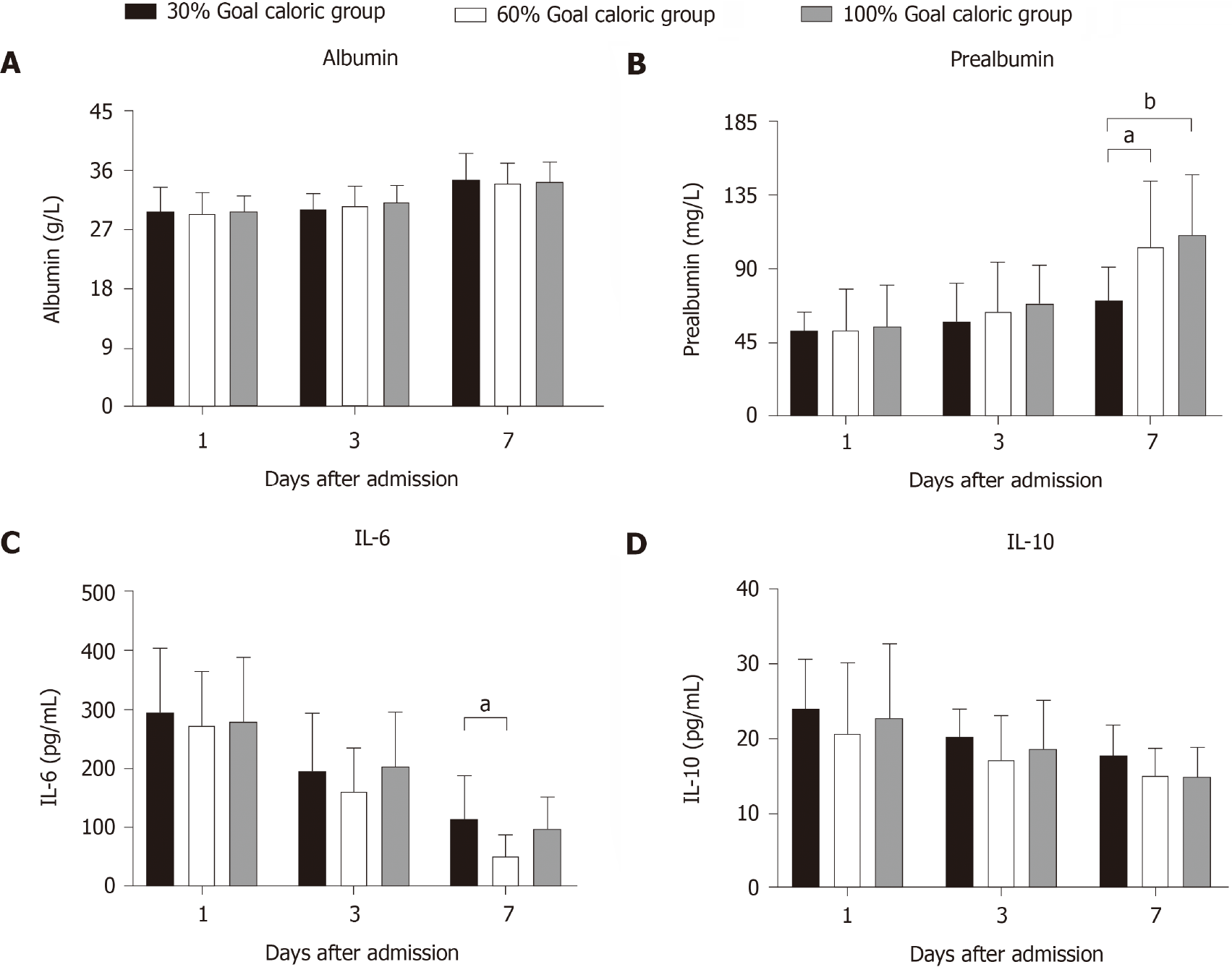Copyright
©The Author(s) 2021.
World J Gastroenterol. Aug 7, 2021; 27(29): 4900-4912
Published online Aug 7, 2021. doi: 10.3748/wjg.v27.i29.4900
Published online Aug 7, 2021. doi: 10.3748/wjg.v27.i29.4900
Figure 1 Flow diagram of the participants.
Figure 2 Comparisons of acute gastrointestinal injury grades (A), days to goal calorie (B), and actual daily caloric intake (C) among the three groups.
aP < 0.05, cP < 0.001. AGI: Acute gastrointestinal injury.
Figure 3 Comparisons of serum levels of diamine oxidase (A), D-lactate (B), and intestinal fatty acid binding protein (C) among the three groups.
aP < 0.05. DAO: Diamine oxidase; iFABP: Intestinal fatty acid binding protein.
Figure 4 Comparisons of serum levels of albumin (A), prealbumin (B), IL-6 (C), and IL-10 (D) among the three groups.
aP < 0.05, bP < 0.01.
Figure 5 No significant differences in the acute physiology and chronic health evaluation II scores (A), sequential organ failure assessment scores (B), or survival probability within 28 d (C) were found among the three groups.
APACHEII: Acute physiology and chronic health evaluation II; SOFA: Sequential organ failure assessment.
- Citation: Sun JK, Nie S, Chen YM, Zhou J, Wang X, Zhou SM, Mu XW. Effects of permissive hypocaloric vs standard enteral feeding on gastrointestinal function and outcomes in sepsis. World J Gastroenterol 2021; 27(29): 4900-4912
- URL: https://www.wjgnet.com/1007-9327/full/v27/i29/4900.htm
- DOI: https://dx.doi.org/10.3748/wjg.v27.i29.4900













